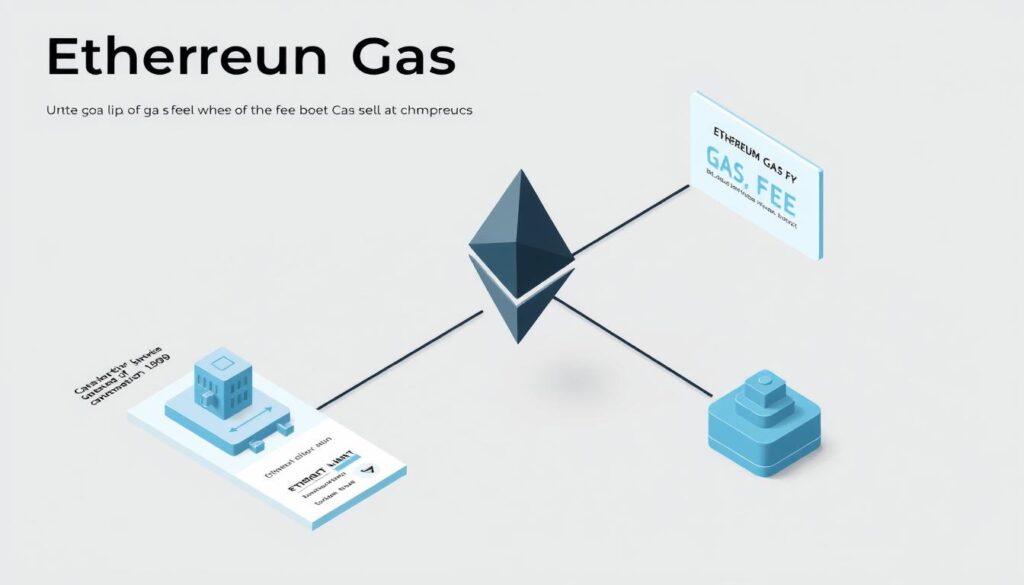Now Reading: Reducing Blockchain Gas Fees Transaction Costs Effectively
- 01
Reducing Blockchain Gas Fees Transaction Costs Effectively
Reducing Blockchain Gas Fees Transaction Costs Effectively

Digital networks require resources to operate. These resources come at a price. For many users, this price is a critical factor in their daily activities.
The expense for using a network can vary widely. As of August 2025, some platforms average less than a penny per action. Others can be significantly higher. This difference is important for anyone participating in the digital economy.
Understanding how these expenses work is the first step to managing them. They compensate the people who maintain the system’s security and functionality. This guide will show you practical ways to keep your spending low.
We will explore the current landscape and provide actionable strategies. You will learn how to choose the right network and time your actions for maximum savings.
Key Takeaways
- Network usage prices differ greatly between platforms like Ethereum and Solana.
- These charges pay for the computational work needed to process your requests.
- Strategic timing and platform selection can lead to substantial savings.
- Layer 2 solutions offer a way to access major networks at a fraction of the price.
- Upcoming protocol upgrades aim to make network usage more affordable for everyone.
Understanding Blockchain Gas Fees Transaction Costs
Complex operations on peer-to-peer systems involve measurable computational work. This effort requires compensation for the validators who maintain system integrity. The term for this compensation originated with Ethereum’s virtual machine but now applies across many digital ledgers.
These payments serve three vital purposes. They reward operators for honest validation, preventing malicious activities. They also deter spam by making attacks economically impractical. During busy periods, they efficiently allocate limited processing capacity.
Each platform requires payment in its native digital asset. Ethereum needs ETH, while other systems use their own tokens. This creates a direct link between system usage and token value.
The concept mirrors automobile fuel consumption. Sophisticated operations demand more resources, similar to powerful vehicles needing more gasoline. For small DeFi activities, these expenses can represent 1-5% of the total value. NFT creation might add $50 or more to the base price.
Understanding these fundamentals helps people make smarter decisions about when and where to conduct their digital activities. This knowledge enables cost minimization while maintaining desired performance levels.
Basics of Gas Fees in the Ethereum Ecosystem
The cost of executing actions on the Ethereum network is measured in a specialized unit called gwei. One gwei equals one billionth of an ETH. This small unit allows for precise pricing of computational work.
A major shift occurred in September 2022 with the Merge upgrade. The system moved to proof-of-stake. Now, validators who stake ETH secure the network and earn these fees.
The amount of ETH a user stakes influences their earning potential. This system rewards participation directly. It also maintains the platform’s security and functionality.
Fees fluctuate based on supply and demand. During busy times, the price rises as users compete for space. Quiet periods offer much lower rates for patient users.
Different actions require different amounts of a resource called gas. Simple transfers use a baseline amount. More complex operations need significantly more.
| Action Type | Typical Gas Units Required | Complexity Level |
|---|---|---|
| Sending ETH | 21,000 | Low |
| ERC-20 Token Approval | 45,000 | Medium |
| Smart Contract Interaction | 100,000+ | High |
The network calculates a base fee for each new block automatically. It looks at the previous block’s size compared to a target. This algorithmic adjustment helps manage congestion.
Understanding these mechanics provides a strategic advantage. Users can time their actions for better rates. They can also set appropriate limits for different operation types.
Historical Evolution and Modern Changes in Gas Fee Models
From a simple multiplier to a complex burned-and-tipped system, the fee structure has been completely redesigned. It started with Ethereum’s 2015 launch, adapting concepts for smarter digital agreements.
Initially, the price was just a gas limit multiplied by a set rate. All payments went directly to the miners securing the network under the old Proof-of-Work model.

Demand has always been the primary driver. The 2017 ICO boom saw average prices between $0.50 and $5. The 2020 DeFi surge pushed this above $10, showing how crowded networks increase costs.
A major shift came with the August 2021 London Hard Fork. This update introduced a base fee that is permanently burned. Users could add a priority tip to speed up their actions. This new model helped reduce price swings.
The September 2022 Merge was a landmark event. It shifted the system to proof-of-stake, cutting energy use by 99.95%. Validators now receive the tips, but the core demand-based pricing remained.
More recent upgrades like Dencun specifically helped Layer 2 solutions. By mid-2024, the average price on the main network dropped to around $3.78. This made using scaling solutions much more economical.
Looking ahead, the Fusaka upgrade in November 2025 promises further improvements. Key changes aim to lower prices by about 70% from previous peaks. High network expenses have consistently pushed users toward more affordable alternatives.
How to Calculate Gas Fees: Base Fee, Priority Fee, and Gas Limit
Understanding the mathematical formula behind network expenses gives users significant control over their spending. This knowledge transforms complex pricing into manageable calculations.
Breaking Down the Calculation Formula
The total expense follows a simple equation: Units Used × (Base Fee + Priority Fee). Each component serves a distinct purpose in the final amount.
The base fee represents the minimum price required for action inclusion. This amount adjusts dynamically based on network activity levels.
Priority fees act as optional tips to validators. Higher tips increase processing speed during busy periods.

Gas limits define the maximum units you authorize for execution. Different operations require predictable amounts, from simple transfers to complex interactions.
Estimation Tools and Real-Time Data
Platforms like EtherScan provide live tracking of current rates. These tools display daily highs, lows, and averages for strategic timing.
Wallet software automatically suggests appropriate settings based on recent history. Users receive refunds for any difference between maximum and actual amounts paid.
Mastering these calculation elements enables informed decisions about timing and settings. This approach balances efficiency with execution speed.
Strategies for Reducing Transaction Costs Effectively
Effective expense management combines timing awareness with technological solutions. Several practical approaches can significantly lower your spending on digital operations.
Smart planning makes a substantial difference in your overall costs. These methods help users maintain activity while controlling expenses.

Timing Transactions for Lower Fees
Network demand fluctuates throughout the day and week. Activity typically decreases during weekends and late-night hours.
Tools like EtherScan provide real-time data showing current rates. This information helps users choose optimal moments for their actions.
Patience during peak periods can lead to substantial savings. Some users report 20% lower expenses during off-peak times.
Leveraging Layer 2 Solutions
Secondary networks offer compelling alternatives to main chain operations. Platforms like Arbitrum process actions at a fraction of the price.
These solutions handle computational work efficiently while maintaining security. Migration to Layer 2 networks represents one of the most impactful strategies for cost reduction.
Many decentralized applications now operate primarily on these scaled networks. Users can minimize costs while accessing the same functionality.
Advanced techniques include batching multiple operations into single actions. This approach reduces overall resource consumption significantly.
Smart Contracts, EVM, and Their Impact on Gas Fees
Programmable agreements on distributed networks fundamentally change how computational resources are priced. The Ethereum Virtual Machine serves as the execution environment where these contracts operate.
This system functions like a massive distributed computer processing applications across the network. Every operation within this environment requires compensation for the computational work performed.

Gas Consumption in Smart Contracts
Complex contracts with extensive code demand significantly more resources than simple transfers. The relationship between contract complexity and execution pricing forms a critical economic consideration for users.
Developers can optimize their code to reduce consumption by 30-50%. Techniques include using efficient data types and minimizing storage operations.
| Contract Complexity | Typical Gas Units | Optimization Potential |
|---|---|---|
| Simple Token Transfer | 21,000-50,000 | Low |
| Basic Smart Contract | 100,000-200,000 | Medium |
| Complex DeFi Protocol | 500,000+ | High (30-50%) |
Validators receive compensation for the real computational resources expended during processing. This includes CPU cycles and memory allocation required for execution.
The system includes refund mechanisms for operations that reduce network state. Understanding how gas fees work helps users make informed decisions about application usage and timing.
Comparing Gas Fee Dynamics Across Different Blockchains
The economic models governing network usage vary dramatically across various digital platforms. Each system implements unique approaches to validator compensation and resource allocation.
Recent data reveals significant price differences between major networks. These variations stem from architectural choices and consensus mechanisms.
Ethereum vs. Solana: Key Differences
Ethereum’s demand-driven model supports over one million validators. This creates variable pricing based on network congestion levels.
Solana utilizes Proof-of-History consensus with parallel processing. This approach maintains consistently low prices ideal for microtransactions.
The contrast is stark: Ethereum averages $0.44 per operation while Solana costs just $0.00025. Throughput capabilities fundamentally impact user expenses.
Insights from BNB, Polygon, and Avalanche
BNB Chain operates with 21 validators for efficiency. This centralized model achieves costs between $0.05 and $0.20.
Polygon employs Layer 2 batching with zero-knowledge proofs. This technology compresses multiple actions into single submissions.
Avalanche’s subnet architecture enables customizable environments. Enterprises can deploy application-specific chains with predictable low prices.
Understanding these dynamics helps users select appropriate networks. Strategic platform choice balances performance requirements with budget constraints.
Optimization Best Practices and Tools for Gas Fee Management
Real-time monitoring tools provide crucial insights for optimizing digital operations. These platforms track network conditions continuously, helping users make informed decisions.
Using Real-Time Gas Trackers
Services like ETH Gas Station and Solana Beach deliver current pricing data. EtherScan offers comprehensive tracking with daily highs, lows, and averages.
The EtherScan Chrome extension displays live prices directly in your browser. This allows continuous monitoring throughout your workflow.
Setting appropriate limits requires understanding different operation requirements. Users must authorize sufficient units while avoiding excessive amounts.
Wallet software like MetaMask automatically calculates parameters based on recent history. Advanced users can manually adjust settings for fine-tuned control.
Priority optimization represents a critical decision point. Real-time data helps determine whether faster processing justifies higher tips.
Future trends include AI integration predicting congestion patterns. Gas abstraction technologies are making fee-less operations increasingly common.
Comprehensive management combines multiple techniques simultaneously. This includes identifying low-fee periods and batching operations together.
Conclusion
The economic incentives driving network security form the foundation of decentralized systems. These payments reward validators for maintaining integrity while balancing accessibility.
Current platforms offer diverse approaches to this challenge. Ethereum prioritizes robustness, while alternatives like Solana focus on speed. Layer 2 solutions provide middle-ground options for users.
Upcoming protocol upgrades promise significant improvements. The Fusaka implementation and zero-knowledge technology aim to reduce expenses substantially. This progress supports broader adoption across applications.
Successful navigation requires strategic planning and continuous learning. Mastering timing techniques and platform selection helps minimize spending. Staying informed through real-time data enables smart decisions.
The future points toward near-zero expenses for microtransactions as scaling technologies mature. Users who embrace optimization strategies will thrive in this evolving landscape.
FAQ
What exactly are gas fees on the Ethereum network?
Gas fees are the payments users make to process actions on a blockchain. Think of them as a processing charge for using the network’s computing power. Every operation, like sending tokens or interacting with smart contracts, requires computational work, and these fees compensate the validators who secure and operate the system.
How is the total cost for an Ethereum transaction determined?
The final price is calculated by multiplying the gas units a task needs (the gas limit) by the sum of two parts: the base fee and the priority fee. The base fee is set by the network itself and is burned, while the priority fee is a tip paid directly to validators to incentivize faster processing of your request.
Why do gas prices sometimes get so high?
High prices are primarily driven by network demand. When many people want their actions processed simultaneously, it creates competition for space in the next block. Users can pay a higher tip (priority fee) to get ahead in line, which drives up the overall market rate for getting a transaction through quickly.
What is the difference between the base fee and the priority fee?
The base fee is the fundamental, mandatory cost for a transaction to be included in a block. This amount is dynamically adjusted by the protocol and is destroyed after payment. The priority fee is an optional extra, a tip you add on top to encourage a validator to prioritize your transaction over others.
Are there effective ways to reduce my transaction costs?
Yes. You can schedule transactions during periods of lower network activity, often late at night or on weekends. Another powerful strategy is to use Layer 2 scaling solutions like Polygon or Arbitrum. These networks process transactions off the main Ethereum chain, offering significantly lower prices.
How do complex smart contracts affect the gas I pay?
Smart contracts that perform more complex operations require more computational steps. Each step consumes a certain amount of gas. Therefore, interacting with a sophisticated decentralized application (dApp) will typically cost more than a simple token transfer because it demands more work from the Ethereum Virtual Machine.
Do other blockchains have fees similar to Ethereum’s gas model?
While many networks have transaction costs, their models differ. Solana aims for very high throughput and lower, more predictable fees. BNB Chain and Avalanche also use gas models but often have lower base costs due to different architectural designs and consensus mechanisms compared to the Ethereum network.











